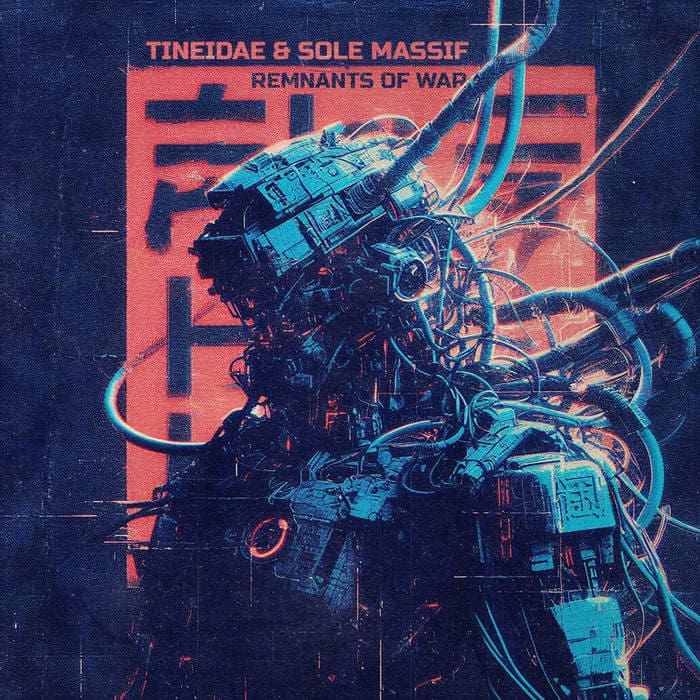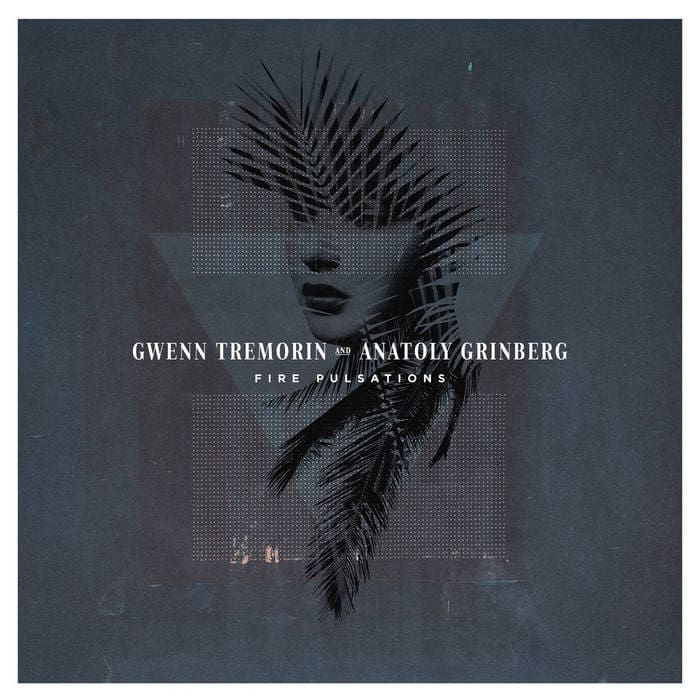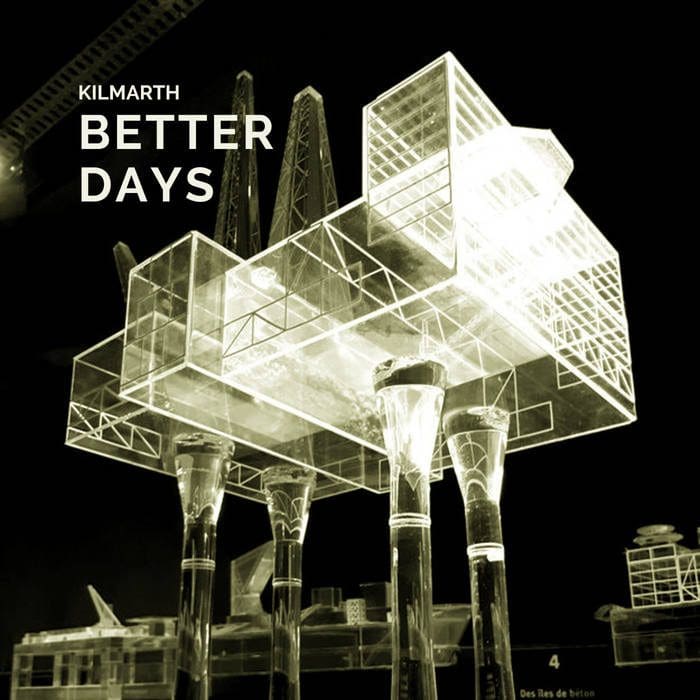Click Interview with Lith: ‘A Global Vision Of Humanity’s Action On Our Planet’

Lith is a French solo-project set up in 1996 by David Vallée (also involved with EKS.Center). Lith this year released the new opus “Anthropocene” which next to be a great Tribal/IDM/Industrial work also is an album with a deeper significance. The title refers to ‘the geological era, succeeding the Holocene, during which the impact of human activity becomes preponderant on the evolution of the terrestrial ecosystem, ahead of all the other natural factors predominant until then.’ An interesting concept transposed into an intelligent sound format that has been released by the French label M-Tronic.
(Courtesy by Inferno Sound Diaries)
Q: Lith is now active for nearly thirty years. How do you perceive the evolution of your sonic project and how much of the early recordings do you still recognize in your newest work “Anthropocene”?
David: The sound of Lith today is quite different from that of the beginning. There is no specific sound guideline for composing my albums, even if there is an Industrial music base. Lith is constantly evolving, the sound has been enriched by various musical influences over the years, sometimes quite eclectic, like Hip-Hop, Dub, Bass, IDM, Experimental music… The ideas also varied, refined, soothed though intensified. Except perhaps the use of distortions or tribal syncopated rhythms, I don’t think we can recognize the Lith from the beginning with the Lith of “Anthropocene”. We can find the firstfruits of this album in “Hiroshima”, released in 2015, from a musical point of view, but hardly earlier.
The original Lith was raw, aggressive and dirty, the “Anthropocene” Lith is deep, precise, intense and cinematic. There is also in terms of ideas and subtlety of the sound something similar to the album “Gaia”, released in 2006, “Anthropocene” is a bit of a continuation.
Regarding the sound technique, as well as the composition, the recording has changed a lot. I learned, I trained on sound techniques, and then, for the finalization of “Anthropocene”, I asked for the help of Rémy Pelleschi (QFG Studio, Mlada Fronta) who is an outstanding sound engineer. This collaboration made “Anthropocene” the album that I think is the most complete in my career, technically speaking at least.
Q: Lith has been always an engaged project which is again reflected in “Anthropocene”. What are the deeper thoughts and concept you try to express and what’s the impact of this action?
David: You are right, LITH has always been a committed project, dealing with ecology, speciesism, the attacks carried by the human being against Nature. Usually, each track of an album could deal with a subject. “Anthropocene” is in this sense different because it deals with a general subject, that is to say a concept album. The word “Anthropocene” is a term more or less recognized in the scientific world, defining a geological era succeeding the Holocene, where the action of the human being becomes preponderant on the evolution of Nature. This term is not officially recognized, but it perfectly represents the concept I wanted to develop in this album.
Whatever the subject dealt with in the various tracks that make it up, they are all bound by the idea that the world of today is totally transformed by the hand of the Human, both biological, marine, atmospheric and geological. In addition to this major transformation, I also wanted to express the rage, despair and anxiety generated by this destructive impact of our actions. Previous albums of LITH denounced what human beings can do, with a notion of hope that it will not change, “Anthropocene” is full of defeatism, a hopeless realization that nothing will change, on the contrary that it will worsen.
I know that my action does not have any impact, it is even more hopeless. My music will be able to convince those already convinced, at best make react the time of some thrill, but most listeners of this album will not react. The video projections during the shows could have an impact, but I think it’s minimal. But I need to try.
Q: How did the preparation and finally composition and production of “Anthropocene” happened? What have been the different stages you’d to go through to achieve this album?
David: After the album “Hiroshima”, I searched for a long time for a new sound, bringing new musical influences to my work. At the same time, I did a lot of research on the themes usually covered by Lith, but I was completely overwhelmed by the amount of information I could use to create my tracks, not to say alarmed by the exponential speed of the destruction of our environment. This could be compared to what is called eco-anxiety. I made the decision in the end to express what I could feel, to say what there was to say in the form of a single idea: Anthropocene, a global vision of Humanity’s action on our planet.
The composition of the tracks was very fast, less than two months, at the end of 2019. During this period I composed about thirty tracks, eight of them clearly stood out. In early 2020 I started working on the sound design of these tracks, I wanted to get something Cinematic, a kind of Soundtrack of the Anthropocene. That was the longer part, because I had a clear idea of what I was looking for. It took over a year and a half to achieve the desired result. The work was even longer as I voluntarily changed my method of work, everything was to be relearned. I really wanted something different, new, specific. The mixing phase ended, I made contact with Rémy Pelleschi who, as a sound engineer, understood what I was looking for, and carried out an exceptional mastering work: the precision, the atmosphere and the coloring I wanted.
The last part was the graphic design. This is a very important phase because for me the imaging of an album completes the music. I called the French artist Sophie Vizzone who has been accompanying me for several years for the conception of my parallel project EKS.Center. Her work was prodigious, she perfectly embraced the subject and understood what I wanted to express, creating a graphic mixing organic and geometry.
Q: “Anthropocene” sounds to me as one of your most eclectic albums. How do you perceive the sound of the new Lith-album and what have been the main sources of inspiration? Do you’ve an idea how you want to evolve in sound on further works?
David: It’s funny because I find that this album is the most homogeneous of all the ones I composed, but it’s rather at the level of the sound technique used that I hear it. I concentrated more on the sound, the atmospheres, the emotions and the sensations, which is maybe why I perceive this singularity. It’s a bit of a sound piece composed of several acts.
The main sources of inspiration for this album are the ideas and emotions I wanted to express. Hence the compositions, in terms of the arrangement of sonorities capable of expressing these ideas and translating these emotions. I haven’t thought about style, I think all my musical influences are reflected in my songs, but I did it unconsciously. Ideas and emotions were the only sources of inspiration.
In terms of future work, I don’t know. The evolution of my sound comes from the aspirations of the moment, from my state of mind, instinctively. The only thing I know is that I want something more Cinematic, more transcendent, hypnotic.
Q: How demanding and self-critical are you with your own compositions? Do you’ve specific references and criteria to say a song/album is finished?
David: I am very strict and critical about my work. Even if the composition is instinctive at first sight, the tracks are constantly reworked, altered, corrected, both in terms of sound and composition. I listen to every detail, I am very precise, almost maniac! For me, a song is finished only if it ‘slides’, if it doesn’t catch anything, if no sound is unpleasant, if the rhythms are perfectly linked, if each sound is heard and has its place. The song must constantly evolve, surprise, not be boring. Sometimes I work on two compositions in parallel so that they are linked as well as possible, because the order of the tracks is already more or less established from the beginning, in the sense of the chain of ideas within the album.
An album is complete when I finish expressing the story I wanted to tell, and the last point is brought up: the design is finished, the graphics are ready.
Q: “Anthropocene” is your first album released by M-Tronic. Considering the decline of physical sales today what do you expect from a label? And how do you expect things evolving?
David: “Anthropocene” is the first Lith album published by M-Tronic, but this label has already published the “Clouds” and “Murmurations” albums of my parallel project EKS.Center.
I decided to collaborate with M-Tronic for their support, their network, but also for their respect for an artist’s work. We agreed on a small edition of “Anthropocene”, few copies were pressed, and this mainly to the attention of amateurs and collectors, from where the care brought to the object itself. We know that physical diffusion is in decline and we agreed that a small series was enough. Nevertheless, M-Tronic also broadcasts this album on many streaming and downloading platforms (like Spotify or Bandcamp).
M-Tronic’s strength in communication helped me to release this album. I could have produced it myself, but I didn’t want this album to remain confidential, not having this promotional capacity. And then, the members of the label are above all passionate friends, and I wanted “Anthropocene” to be released.
For the future, we’ll see. I would like to continue to work with M-Tronic, physically or digitally, depending on the music industry at the time and the demand from the audience. But I admit that I enjoy producing physical objects!
Since you’re here …
… we have a small favour to ask. More people are reading Side-Line Magazine than ever but advertising revenues across the media are falling fast. Unlike many news organisations, we haven’t put up a paywall – we want to keep our journalism as open as we can - and we refuse to add annoying advertising. So you can see why we need to ask for your help.
Side-Line’s independent journalism takes a lot of time, money and hard work to produce. But we do it because we want to push the artists we like and who are equally fighting to survive.
If everyone who reads our reporting, who likes it, helps fund it, our future would be much more secure. For as little as 5 US$, you can support Side-Line Magazine – and it only takes a minute. Thank you.
The donations are safely powered by Paypal.










